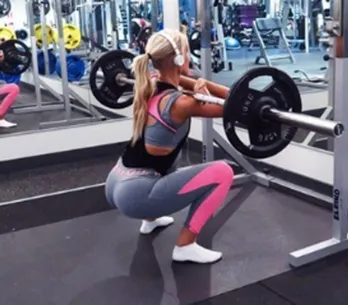Why exercise is good for you
- It increases the muscular power of the heart and slows the resting heart rate. This results in a reduction in the risk of cardio-vascular problems and improved stamina.
- It improves blood circulation in the arteries, which leads to a reduction in the risk of strokes, phlebitis, etc.
- It oxygenates the muscles and organs, improving endurance, strength and speed. The whole body functions better (brain and digestive system) and you sleep better.
- It solidifies the joints, strengthens the ligaments and makes them more flexible. It strengthens the bones (by increasing bone mass) and as a result prevents the loss of bone mass linked to ageing.
- It develops flexibility and coordination.
- It makes you feel good about yourself, confident and euphoric.
- It aids weight control by reducing fat volume.
- It shapes the figure by toning all the muscle groups.
The best way to exercise
Sure, you need to exercise every day when you want to maintain your shape and health. But to benefit fully, ideally you need to vary your activities as follows:
- Endurance exercise twice a week: swimming, cycling, walking, jogging or cardio-vascular training, for at least 40 minutes.
- Muscle strengthening once or twice a week: weights, aquaerobics and yoga all define and tone the muscles.
- A balance activity once or twice a week: to improve coordination and posture, try dance, aerobics, racket sports, team sports and martial arts. They're great fun too.
- Cool down after each session to stretch, relax and recuperate (stretching, gentle jogging, deep breathing, etc).
Tips and advice
To exercise without risk or injury (from fatigue, cramp, aches, pains, fractures, tendonitis, etc.), follow these rules:
- See a doctor before you start. It's a good idea to have a medical every year to check your health.
- Exercise at your level. Always adapt the length and intensity of the exercise to your level of fitness.
- Warm up before any form of exercise for at least 15 minutes. Walk on the spot to increase your heart rate and body temperature, stretch your muscles, rotate your main joints, etc.
- Equip yourself correctly with the right clothes and materials for the exercise, your body shape, level and the conditions.
- Drink enough water. Exercise makes you lose a lot of liquid. To compensate for this loss you need to force yourself to drink regularly in small quantities (1 glass at a time) without waiting until your mouth is dry and you feel parched.
- Adapt your diet to the exercise you do. During exercise, the need for sugar (fuel for the body) can be very high. So it’s essential to eat slow-release carbohydrates (bread, pasta, rice, cereals, potatoes etc.) before any kind of sustained exercise. Protein and iron are also essential for the transport of oxygen in the muscles and for their upkeep.
- Recuperate. Stretching, water, a warm shower and massage will stop you suffering from pain and fatigue.
- Exercise regularly, but don’t go over the top. Your physical condition has to be maintained because it regresses when you are inactive: physical capacity clearly drops 2 weeks after stopping exercise, and after 12 weeks without exercise the benefits gained are lost. To maintain your physcial condition, exercising for 45 minutes 3 times a week is enough (daily exercise is possible as long as you don’t do too much as it could cause harmful fatigue).













